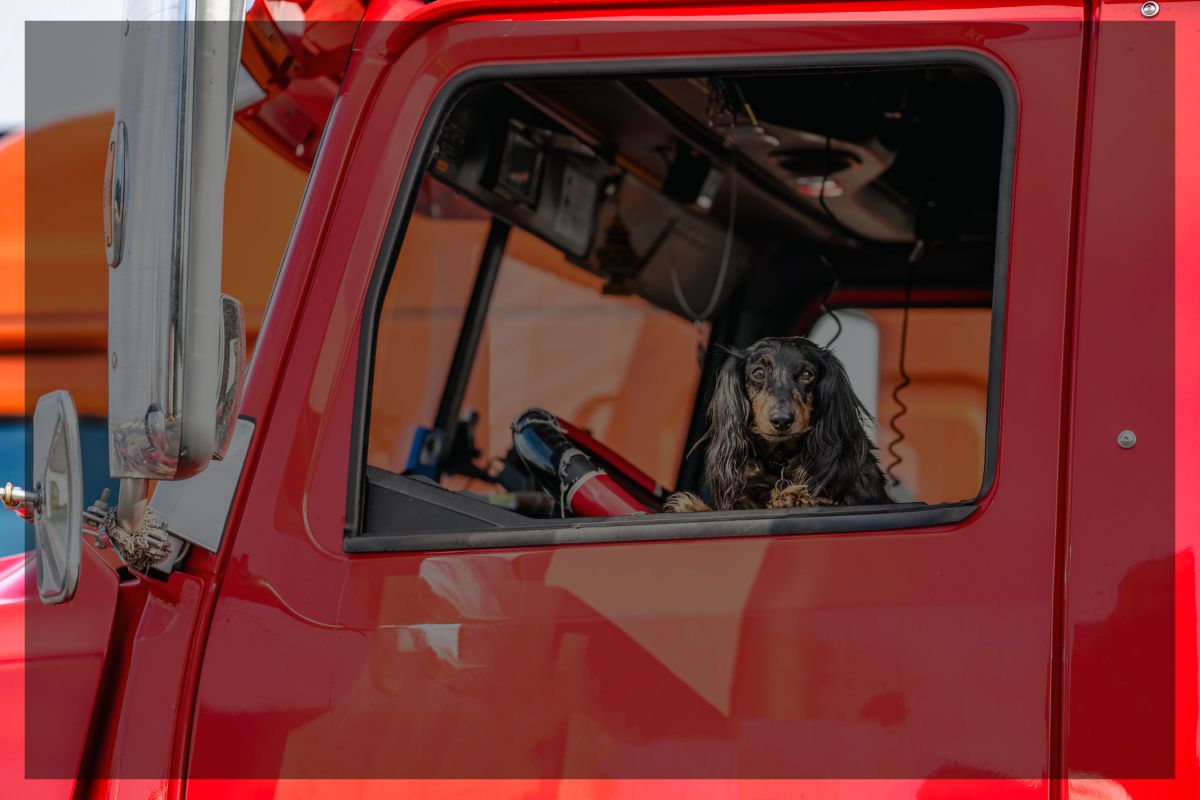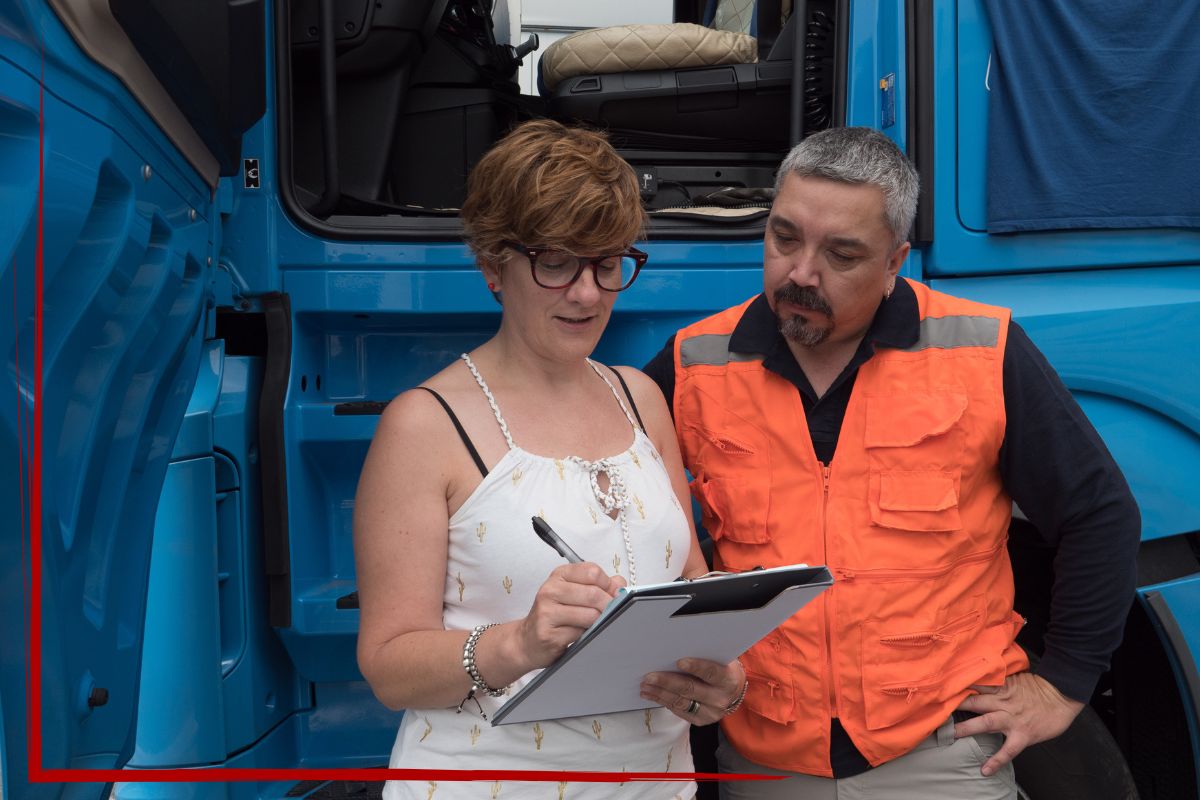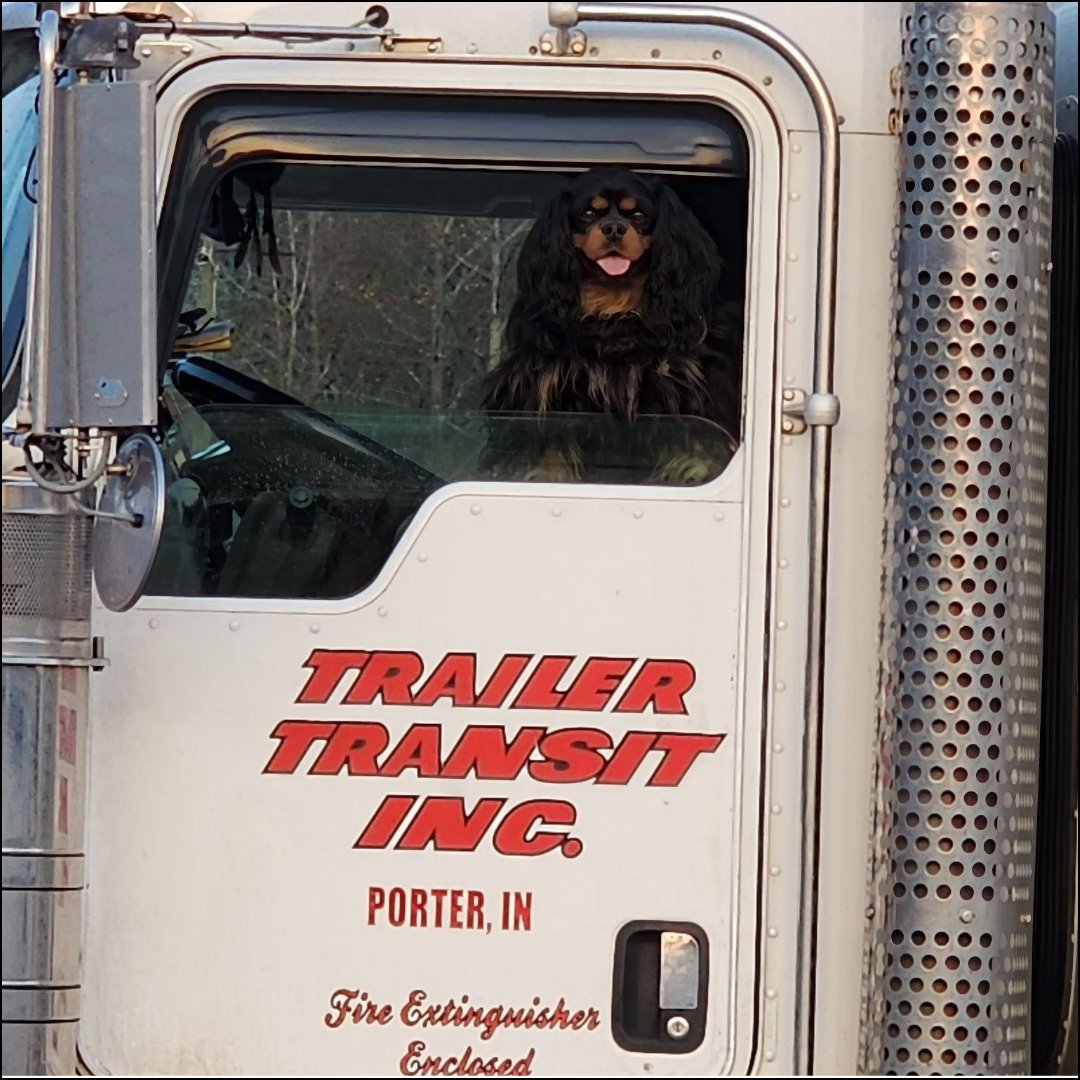
Owner Operator of the Month – September 2025 – Robert
10/23/2025
Miles Go Faster with a Friend: Why Companions Make Power-Only Trucking Better
11/18/2025Life on the road can be rewarding, but it also comes with challenges. One of the biggest reasons drivers leave the industry is extended time away from home. Long hours, days on the highway, and weeks away from family take a toll.
It’s no wonder that trucking companies that allow passengers are getting more attention. A structured passenger ride-along program or pet policy gives your drivers the chance to bring part of home with them, supporting retention, performance, and overall well-being.
For Trailer Transit, which focuses on power-only trucking jobs and has nationwide operations, companion programs are a way to create stability for your drivers.
Let’s break down what companion programs look like, how they fit into compliance and safety rules, and how you can get started.
What Is a Companion Program and Why Does It Matter
A companion program is a formal policy that allows approved passengers, whether people or pets, to ride along in a truck. These programs outline who can join, under what conditions, and how safety is managed while on the road. When implemented correctly, a program like this can improve the mental health of your truck drivers.
While the program can change from company to company, it typically includes:
- Spouse or Partner: Sometimes, companies allow you to bring along your spouse or partner when on the road. They even highlight husband and wife team truck driving jobs, which let couples work and travel together.
- Family or Friends: While rules typically exclude minors, you can approve adult family or friends in the companion program. However, some companies allow drivers to take their kids or grandkids along, depending on their passenger insurance, the company they drive with, and other factors.
- Pets: Many companies now allow pets to accompany truck drivers, because after all, pets are family. If your program lacks this policy, many talented drivers could turn to pet-friendly trucking companies for job offers.
Running a solid companion program directly impacts the truck driver’s lifestyle. Bringing a loved one along helps boost mental health, cuts down on isolation, and makes the long days on the road more manageable.
Drivers are also more likely to stay with a company that supports their personal needs, improving recruiting and retention. Stable, satisfied drivers deliver better results and fewer turnover costs for your carrier company.

Compliance, Insurance, and Documentation Your Companion Program Requires
While ride-alongs sound simple, they can turn into legal liabilities if you’re not careful. You’ll need to keep the following things in mind.
- FMCSA Seatbelt Rules: Nearly half of all large truck occupants not wearing a seatbelt die in fatal crashes. Rules require every occupant in the cab to have their own seat and use a seatbelt at all times. This is non-negotiable and is checked during roadside inspections.
- Load Restrictions: Certain hauls, like HAZMAT, oversize, or specialized freight, prohibit passengers for safety reasons. These loads involve higher risks, and regulations make it clear that extra riders are not allowed. Always confirm with dispatch if a specific load type has restrictions.
- Passenger Authorization: It’s also better to get written approval from the passengers before the trip begins. You’ll often need to submit a request to your safety or HR department.
- Documents you’ll need:
- Government-issued ID for the passenger.
- Signed company authorization form.
- Proof of insurance, where required.

Don’t Ignore Safety Management and Risk Mitigation
Allowing passengers or pets can be a powerful recruiting tool, but it also increases your responsibility as a carrier. To keep your programs safe and professional, you should consider:
- No Distractions: Train your drivers on setting expectations for ride-alongs. Set rules for even the simplest things in the truck driver passenger policy, like limiting device use or unnecessary conversation in heavy traffic, to reduce risk.
- Emergency Procedures: Make sure passengers also understand what to do in breakdowns, severe weather, or incidents. Provide written instructions to protect both the driver and your operation.
- Pet Safety: For truck pets, provide clear-cut instructions on using crates, crash-tested harnesses, and heat management inside the cab. Remember, your drivers love their pets as much as they love their family.
- Secure Operations: Remind your drivers to prioritize vetted parking and to stay aware when traveling with passengers. Companions can make drivers safer, but they can also make trucks more noticeable.
- Cab Cleanliness: Cab cleanliness shows professionalism and care. A clean cab helps prevent odors, pests, and health risks. It’s especially important for carriers handling food, medical supplies, or sensitive freight. Set crystal clear rules to keep your cab tidy. It also creates a better work environment and helps your drivers stay alert and focused on the road.
- Allergies and Sensitivities: Other drivers or passengers may have allergies to pets or strong odors. Before anyone else uses your truck, make sure it’s deep-cleaned, especially after traveling with animals. This step keeps the cab safe, clean, and comfortable for everyone in the fleet.
- Waste Management: Set clear rules for handling pet waste inside and outside the cab. Dispose of it properly using sealed bags and designated bins. Clean up immediately to avoid contamination and bad smells. Proper waste management keeps your cab healthy, shows respect for customers and the public, and keeps your vehicle inspection-ready.

Set Your Operational Planning and Professional Standards
A strong truck driver passenger policy should include clear operational guidelines:
- Trip Planning: Require your drivers to identify companion-friendly rest areas, food options, and pet relief zones. This minimizes disruptions to your delivery schedules.
- Dispatch Communication: Your team needs to know when a passenger ride-along program is in use. Your customers may have strict site rules that prevent passengers, and advanced communication helps avoid conflicts.
- Professional Image: Driver companions represent your brand, too. Set standards for courtesy and appearance when passengers interact with shippers or the public. For team truck driving jobs, reinforce how professionalism impacts customer perception.
Get Started with Your Companion Program
Launching a safe and compliant companion program doesn’t need to be complicated. Here’s a quick recap of what you need to do:
- Confirm how truck drivers can have passengers in your current framework.
- Have your HR or safety managers sign off on every owner-operator trucking job involving a ride-along.
- Standardize requirements for IDs, insurance, and signed waivers.
- Train your drivers to secure seating and storage before trips.
- Plan a pilot run before you go all in. Start with short hauls to work out operational kinks.
- Collect driver feedback and adjust your policies as needed.
Trailer Transit has long supported power-only trucking jobs across the country with ride-alongs for family, friends, and pets. Our structured companion policy keeps drivers engaged, healthy, and loyal.

For trucking companies, the question isn’t just “Can a partner or pet stay with an over-the-road trucker?” It’s how to do it safely, legally, and profitably. A well-managed passenger ride-along program helps your drivers combat isolation, improves their mental health, and strengthens retention.
But if you want your company to stand out, build a clear truck driver passenger policy, support safe ride-alongs, and give your drivers the option of bringing part of their home with them. Trailer Transit already has several drivers who take their pets along.
We’re a trusted power-only carrier. If you’re a company/brand that supports a companion program or a driver craving a rewarding lifestyle, we can help. Call 800-423-3647 or reach out online to learn more about our services.



